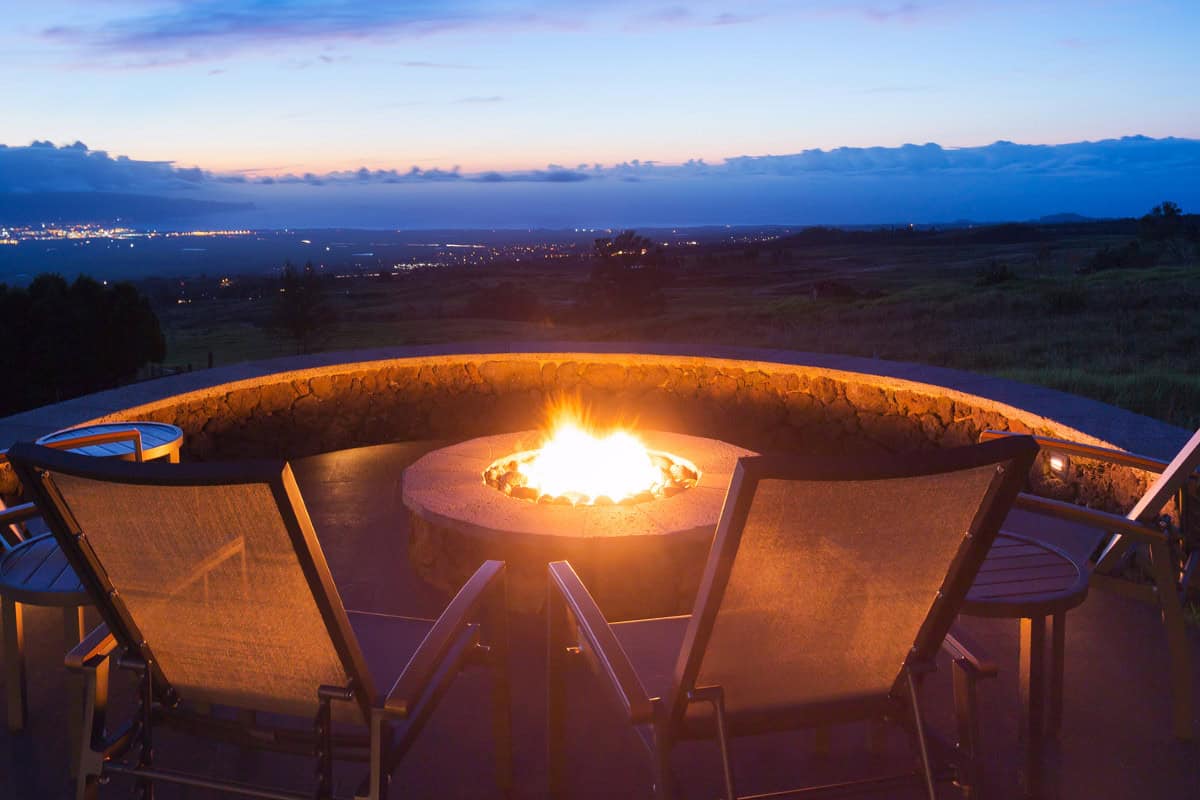
Nothing ruins a relaxing night outdoors like when your gas fire pit keeps going out unexpectedly, forcing you into gas fire pit troubleshooting mode.
Owners feel frustrated when flames refuse to stay lit, especially after investing time and money into their patio upgrade. Gas fire pit problems like a weak pilot light, low gas pressure, or blocked burners can quickly turn relaxation into a hassle.
Understanding why your propane fire pit keeps going out saves you repeat headaches. Common causes range from simple issues with fuel supply to more hidden problems inside the burner system. With the right propane fire pit troubleshooting steps, you can avoid trial and error and keep your next backyard gathering on track.
In this guide, you’ll learn the main reasons gas fire pits shut off, get smart tips for troubleshooting your propane fire pit, and discover how proper maintenance affects performance and safety. If your propane fire pit table keeps going out, knowing where to start gives you peace of mind and helps your fire pit burn strong all season.
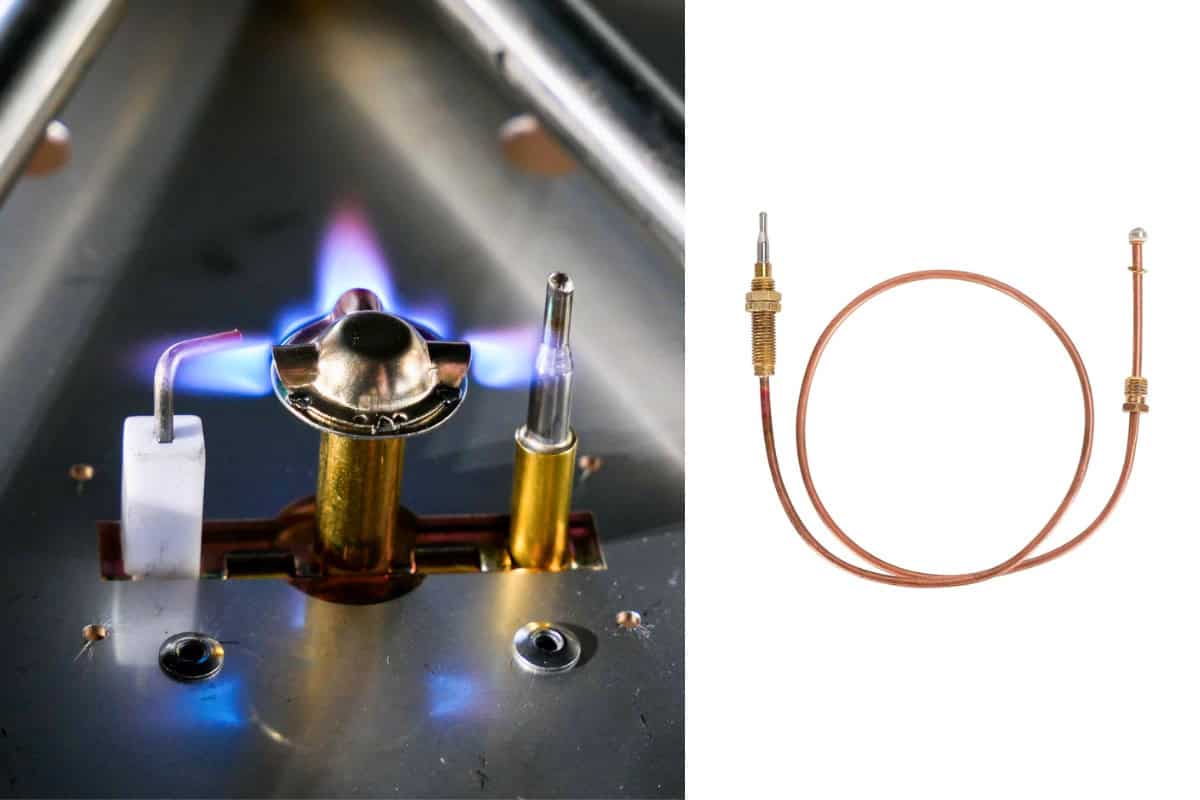
Why Your Gas Fire Pit Keeps Going Out: Key Causes and Quick Fixes
If your gas fire pit keeps going out, you’re not alone. Many owners face this headache, but most problems have clear fixes.
Whether you’re dealing with a fire pit that flickers out the moment you light it, or one that can’t stay on through a breezy evening, knowing the main causes is the first step.
Let’s break down the top reasons why your flames refuse to stay lit and get you quick solutions for reliable backyard fires.
Thermocouple Malfunctions: Stop the Fire from Staying Lit
The thermocouple in your gas fire pit is like a security guard. Its job? It checks if a flame exists and, if not, shuts off the gas to keep you safe.
When the thermocouple goes bad, your fire pit can light—but it won’t stay lit.
Here’s how to spot thermocouple trouble:
- The flame goes out seconds after you release the ignition knob.
- Your propane fire pit keeps going out immediately, especially after releasing the control button.
Common reasons for thermocouple failure include dirt, misalignment, or general wear. Sometimes, fire glass or debris blocks the flame from reaching the sensor.
To fix:
- Clear all fire glass and debris around the thermocouple (leave a 2-inch gap).
- Check positioning. The flame must touch the thermocouple. If it’s off-center, gently adjust it.
- Hold the knob in longer. Most models need 15-20 seconds to heat the sensor.
- If still failing, consider replacement. Replace the thermocouple after confirming gas flow and flame alignment. This part is inexpensive but best installed by a pro if you’re unsure.
Sticking to these steps knocks out the most common reason why your gas fire pit keeps going out. If you’d like more background while fixing yours, check out guides on propane fire pit troubleshooting for clear instructions.
Wind and Outdoor Conditions
Mother Nature can snuff out a fire pit in seconds. High winds blow the flame off the thermocouple, causing the sensor to shut off gas flow.
Moisture and dirt also interrupt ignition, especially after rain or long periods without use.
If my gas fire pit keeps going out on breezy days, here’s what helps:
- Shield your fire pit. Place it where walls, fences, or windbreaks block strong gusts.
- Cover when not in use. Keep moisture and debris out by using a snug, weather-proof cover.
- Clean burner ports and jets. Remove built-up dirt with a soft brush or compressed air.
Before your next gathering, pick a spot that’s out of the prevailing wind or use a glass wind guard. Not only will this help your flame burn strong, but you’ll also boost safety and extend your fire pit’s life.
Low Gas Pressure or Bad Gas Supply
A big reason your propane fire pit keeps going out is gas supply trouble. If your tank is near-empty, your gas line is undersized, or there’s a kink in the hose, you’ll see weak or failing flames.
You can spot low gas pressure by these signs:
- The fire is small, won’t stay lit, or goes out when you increase the flame height.
- Ignition is delayed or fails entirely.
- The flame sputters, especially when other appliances are running.
Quick fixes include:
- Check your fuel source. Make sure your propane tank is full and valves are open.
- Inspect for kinks and leaks. Straighten any bends in gas hoses and confirm no hissing sounds.
- Review gas line size. Undersized lines starve your burner, especially if you have a large fire pit. For more info on sizing and troubleshooting, read this fire pit BTUs guide.
Reliable flames start with good gas flow, so don’t overlook your fire pit’s supply lines. Following these propane fire pit troubleshooting tips will keep your flames steady and your outdoor space ready for guests.
If you need more help, check out our full guide on gas fire pit BTUs and heat output, which explains how proper gas supply impacts every fire pit feature.
By addressing these key causes—thermocouple issues, weather interference, and gas supply problems—you’ll quickly solve most problems when your propane fire pit table keeps going out. Your backyard space deserves a fire pit that works every time you need it.
While gas pressure issues might seem complex, diagnosing them doesn’t have to be guesswork. The interactive troubleshooting guide below takes you through the same systematic approach that gas technicians use, helping you safely identify whether your problem stems from tank issues, connection problems, or equipment malfunctions.
Simply answer each question honestly, and you’ll quickly discover the most likely cause of your fire pit troubles.
🔥 Gas Pressure Troubleshooting Guide
This interactive diagnostic tool will walk you step-by-step through identifying gas pressure issues that commonly cause fire pits to go out. By answering simple yes/no questions about your fire pit’s symptoms and components, you’ll quickly pinpoint the most likely cause of your problem.
The tool systematically checks everything from your propane tank level and valve settings to gas line connections, regulators, and burner conditions. Each step is designed to help you safely diagnose issues without guesswork, leading to specific solutions that restore reliable flames to your outdoor fire pit.
Gas Fire Pit Won’t Stay Lit?
Let’s diagnose if you’re experiencing gas pressure issues. Common symptoms include weak flames, immediate shutoff, or difficulty igniting.
⚠️ Important Disclaimer
This tool provides basic diagnostic guidance for common gas pressure issues. For complex problems, professional installation, or safety concerns, please consult with your local gas fire pit specialty retailer or a qualified technician. Always prioritize safety and follow manufacturer guidelines when working with gas appliances.
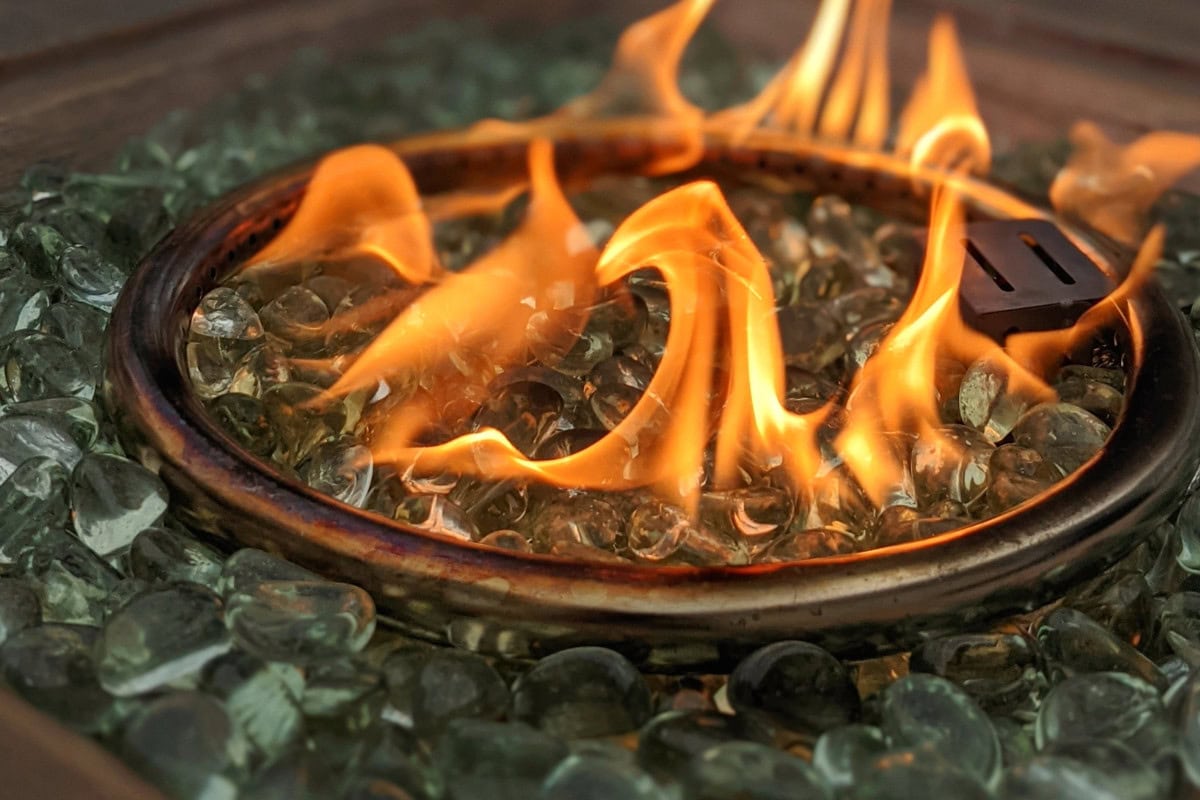
Gas Fire Pit Troubleshooting Steps That Work
If your gas fire pit keeps going out in the middle of a relaxing evening, you’re not alone. Many fire pit owners deal with flames that disappear or refuse to stay lit even while everything else looks right.
This section will walk you through hands-on propane fire pit troubleshooting steps that often solve the most stubborn problems.
With a little care and some simple checks, you’ll discover most issues are fixable without calling a pro.
Visual Inspections: Loose Parts, Blockages, and Debris
Start your troubleshooting by putting safety first. Always shut off the gas supply before inspecting your fire pit, and let all components cool down if you’ve used it recently.
Look for these telltale problems:
- Loose or disconnected fittings: The slightest wiggle in fittings or control knobs can trigger shutdowns. Gently tug on hose connections and check for movement. Tighten any areas where you notice a loose fit.
- Dirt, cobwebs, or leaves: Debris in the burner ports or around the ignition can block gas flow. Use a soft brush or compressed air to clear out the area. For example, one reader found a spider’s nest clogging their burner’s air inlet—removing it instantly brought their flames back. This kind of fire pit troubleshooting often reveals simple solutions to keep the fire going.
- Burner and pilot light coverage: If you use fire glass or decorative rocks, make sure they don’t spill over and block burner holes. Clear at least a two-inch gap around the thermocouple and pilot area so the flame can reach the sensor.
Taking a few minutes to inspect and clean will often restore reliable flames and reduce repeat problems. If you spot any corrosion, cracks, or heavy soot buildup around burner ports, make a note—these may signal you need repairs or new parts.
For a detailed checklist of quick fixes and deeper gas fire pit troubleshooting ideas, see this Gas Fire Pit Trouble Shooting 101 – Quick Check List, where you’ll find practical advice for both simple and more complex fire pit issues.
Checking Gas Connections and Pressure
Problems with gas flow often explain why your propane fire pit keeps going out. Effective fire pit troubleshooting means catching fuel supply issues early with a straightforward inspection routine:
- Propane tank check: Confirm your tank has enough fuel. Lift the tank to feel the weight or check the gauge if it’s available.
- Hose and regulator inspection: Look for kinks, pinched hoses, or signs of wear. Smooth out kinks and replace any damaged lines before using your pit again.
- Tight fitting connections: Make sure every connection is securely fastened. Gently tighten with your hand; do not over-tighten.
- Soap test for leaks: Mix soapy water and brush it over the connections. If you see bubbles when the gas is open, you have a leak and must stop using the pit until it’s fixed.
If your gas fire pit troubleshooting points to low or inconsistent pressure, check that your tank is upright and the regulator functions correctly.
Propane pressure should read around 11 inches Water Column (WC). Most home fire pit owners can’t test this directly without a gauge, but consistent flame height and quick ignition signals healthy pressure.
If the flame is weak, your tank could be near empty, or the regulator might need a reset.
Learn more about fuel supply and what impacts flame performance with this guide to gas fire pit BTUs and heat output.
Ignition and Pilot Light Issues
Sometimes, even with solid gas flow and a clean burner, your fire pit won’t stay on due to problems with the ignition or pilot system.
If the pilot light flickers out or refuses to start, focus your propane fire pit troubleshooting on these points:
- Dirty or misaligned pilot orifice: Dust and tiny debris can clog the pilot jet. Use a soft wire or compressed air to gently clear the opening.
- Weak spark igniter: Make sure the igniter snap is strong. If it’s faint, replace the battery or check wiring if accessible. Avoid letting wires touch metal parts where possible.
- Thermocouple not sensing the flame: If the pilot flame doesn’t touch the thermocouple, the gas will shut off. Gently reposition the thermocouple or clear away any fire glass. Hold the ignition button down for at least 15-20 seconds during startup so the sensor heats up fully.
A stubborn pilot can be frustrating, but most issues stem from clogging, misalignment, or faulty connections.
Stay patient, go step by step, and don’t force anything. If your pilot light still doesn’t cooperate or if the whole system resets when you release the control knob, you may need to replace a worn thermocouple.
For more expert troubleshooting tips and solutions for persistent ignition issues, check out this helpful resource on common gas fire pit problems and solutions.
Following these steps not only helps when your gas fire pit keeps going out but will also prevent future headaches and keep your gatherings running smoothly.

Preventing Future Fire Pit Problems: Proactive Tips for Outdoor Enjoyment
Keeping your gas fire pit burning safely and reliably means staying ahead of common issues before they ruin a relaxing night.
A little regular care can stop repeat headaches, give you better flames, and keep everyone safer around the fire.
Whether your gas fire pit keeps going out or you want to avoid another night of troubleshooting, these habits set you up for carefree gatherings all season.
Cleaning Burner and Ports: Safe Steps for a Reliable Flame
Routine cleaning makes a big difference if your propane fire pit keeps going out. Burner ports and jets can attract dirt, spider webs, or even debris from leaves and ash.
When this happens, gas flow suffers, and flames struggle to stay lit.
Safe burner cleaning is easy if you follow this pattern:
- Turn off the gas supply first. Let the burner cool completely before touching any parts.
- Use a soft brush to clear away visible debris from burner ports. Avoid anything metal or abrasive that could damage parts.
- Check vents and air holes. Compressed air works well for blowing out stubborn blockages in tiny burner holes and jets.
- Keep burner holes clear. Clogged jets can choke off gas flow and even cause a dangerous leak.
- Inspect for cracks or heavy soot buildup during each cleaning, which could point to deeper issues.
You want every port and burner hole open to let gas through and air mix in. Blockages don’t just cause weak flames—they can push gas where it’s not welcome and create a risk if left unchecked.
Trust your eyes and nose; if you ever smell gas or see black soot forming quickly, pause and check for leaks and clogs.
If you need an in-depth walkthrough on cleaning, check the Cleaning and Best Practices for Your Outdoor Gas Fire Pit for clear steps and photos.
Stick to gentle routine care. Catching dirt or spider nests early keeps you from searching for propane fire pit troubleshooting solutions when you’d rather just toast marshmallows.
Seasonal Inspections and Safe Storage: Check Before You Burn
Before you light your fire pit for the year, look it over from top to bottom. Cold, wet weather and months of storage can wear out hoses or loosen fittings, sometimes without any obvious signs.
Here’s a simple seasonal inspection routine:
- Check hoses for cracks, kinks, and brittleness. Replace any that look worse for wear.
- Tighten hardware and burner fittings. Even small gaps can cause leaks or weak flames.
- Look for rust and corrosion. Address any issues before they compromise safety or function.
- Check for critters. Spiders or small animals sometimes build nests in burner boxes or vents over the winter.
Safe storage pays off too. Store your fire pit in a dry place and use a weatherproof gas fire pit cover to keep out rain, snow, and falling leaves.
If you live in a wet climate or leave your fire pit outside all year, consider lifting the entire unit on pavers or a dry base to avoid water damage. Store propane tanks upright and outside, never in garages or sheds.
Adopt best practices and you’ll avoid mid-season surprises. For more tips and a firewood storage guide that works for many backyard fire features, see Firewood Storage Tips for Outdoor Fireplaces.
Even if you burn only gas, learning how to keep wood dry and clean extends to all fire pit care.
These habits won’t just keep your gas fire pit from going out—they’ll help you relax with the peace of mind that comes from a safe, well-cared-for backyard centerpiece.
Regular maintenance means fewer troubleshooting headaches and more glowing evenings under the stars.
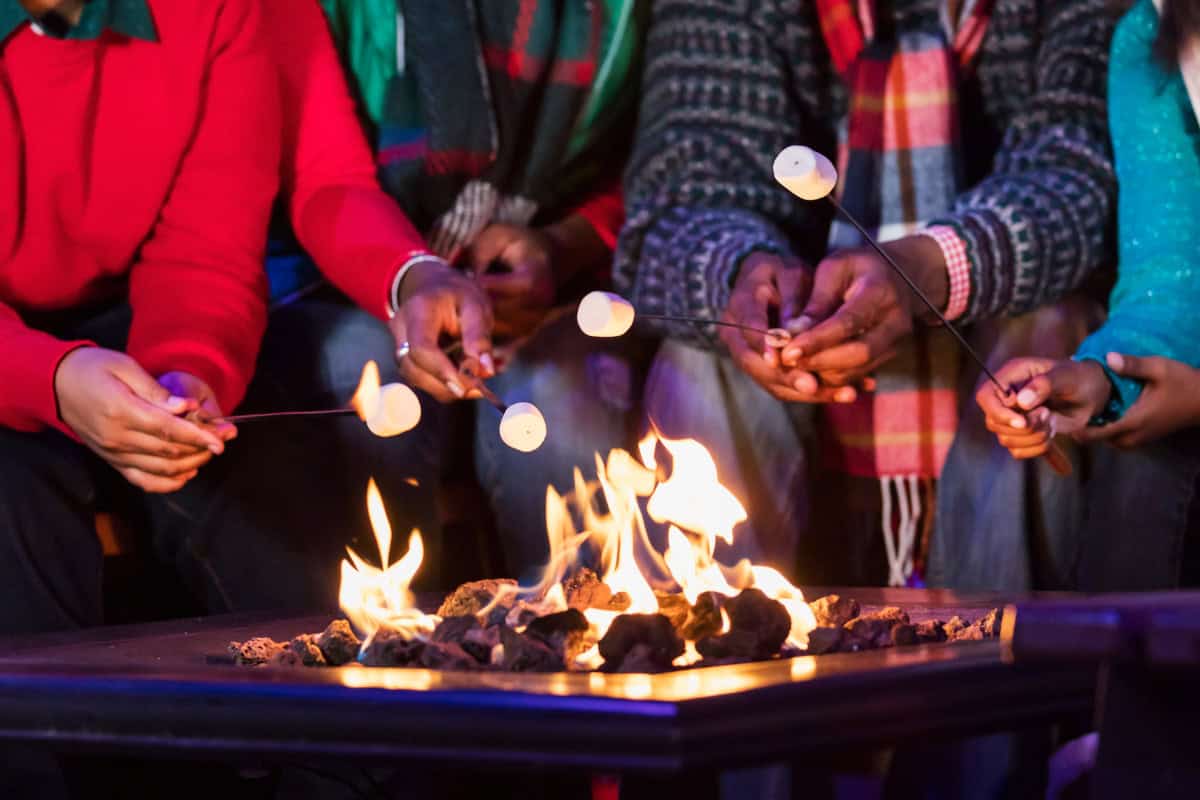
FAQs: Gas Fire Pit Keeps Going Out?
Many fire pit owners want quick answers when their gas fire pit keeps going out. If you find yourself searching for fixes over and over, you’re not alone.
Below are the most common questions people ask about difference gas fire pit challenges, with clear answers to help you keep your fire pit glowing strong.
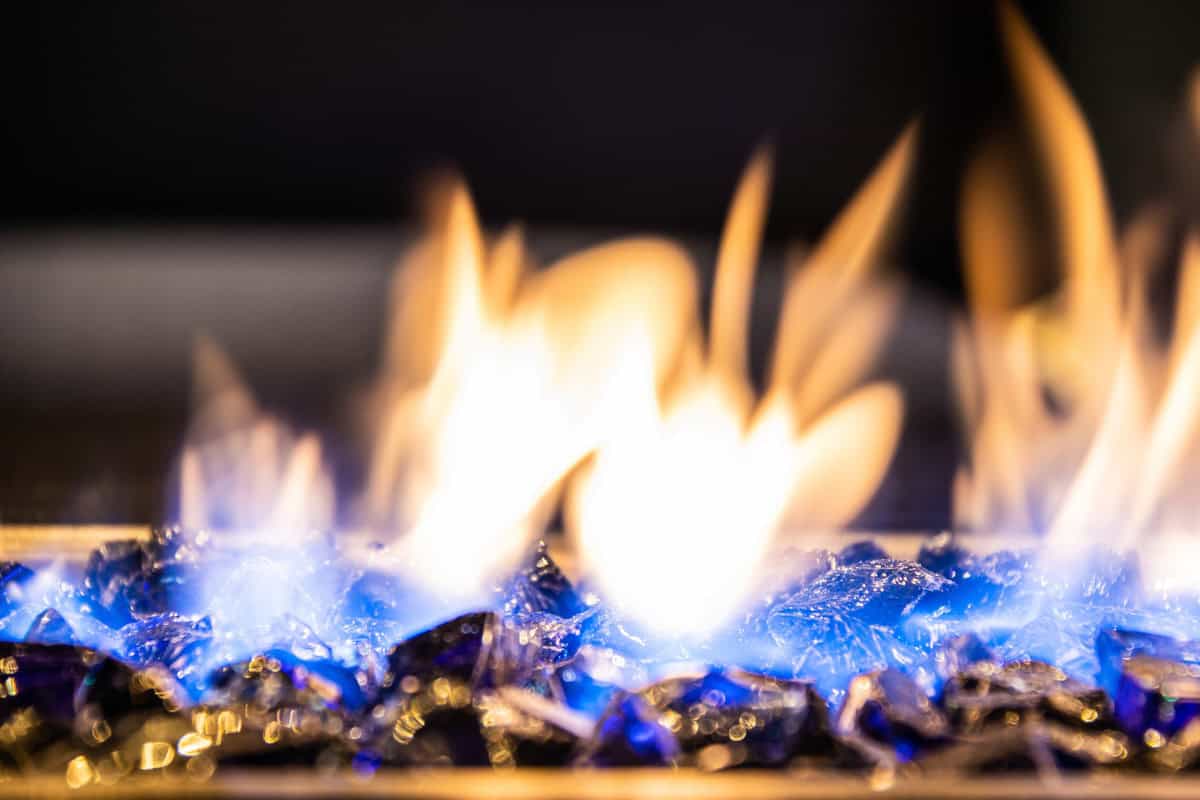
Wrap-up: Gas Fire Pit Keeps Going Out?
When your gas fire pit keeps going out, small issues often have simple solutions. Clean burners, clear thermocouple sensors, and solid gas connections make a huge difference.
Routine propane fire pit troubleshooting stops problems before they drag down your evening.
Most owners can fix common outages by following step-by-step advice. However, regular checks and a focus on safety ensure your fire pit works when you want it.
To keep enjoying safe, reliable flames, explore our tips for gas fire pit whistling sounds and compare gas vs wood burning fire pits to see what’s best for your outdoor space.
Thank you for trusting Backyard Toasty for guidance. Share your experience in the comments and let others know what worked when your propane fire pit kept going out.
Your attention to detail brings more warmth and joy to every backyard fire.


